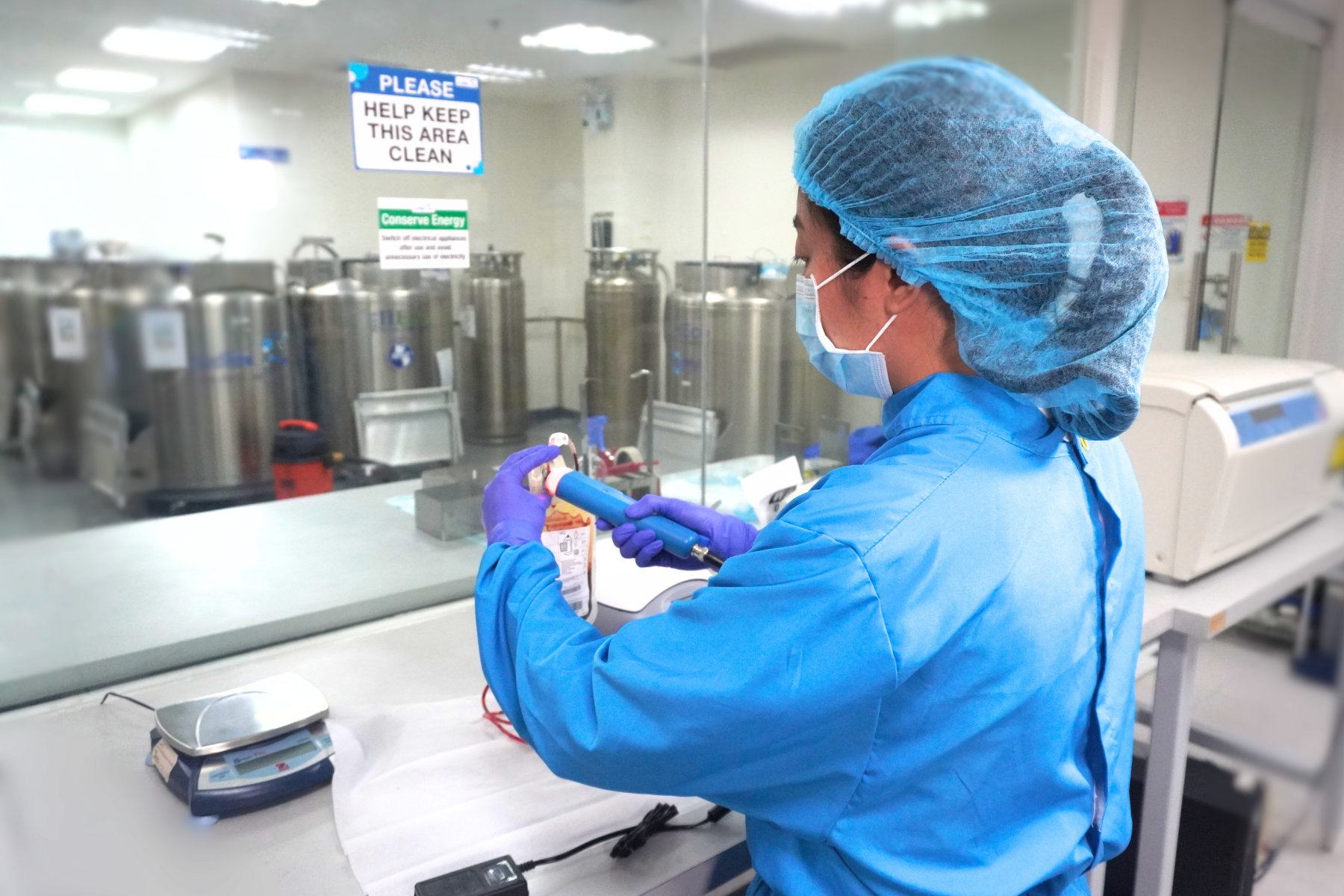
Cordlife Philippines: Frequently Asked Questions about Stem Cell Banking
You've probably heard about cord blood banking and/or umbilical cord stem cell banking and may be curious about learning more. What does it really mean to collect and store the stem cells, and why are more Filipino families choosing Cordlife Philippines?
We’ll answer your top questions and help you understand how Cordlife offers an unparalleled level of security, expertise, and innovation in stem cell banking.
1. What is Cord Blood and Why is it Valuable?
Cord blood is the blood collected from your baby’s umbilical cord after birth. It’s rich in hematopoietic stem cells (HSCs)--the same type of stem cells used in bone marrow transplants.
These stem cells can potentially treat over 80 life-threatening diseases such as leukemia, thalassemia, and certain immune and metabolic disorders. Clinical trials are also exploring their potential in regenerative medicine, such as treating cerebral palsy and autism.
2. What is Umbilical Cord Stem Cell Banking?
Umbilical Cord Stem Cell Banking is the process of collecting, processing, and storing stem cells from the umbilical cord of a baby for future medical use. When you choose cord blood banking, you’re preserving your child’s valuable biological resource--one that’s a perfect match for them and possibly for the siblings or family members.

3. Why Choose Cordlife Philippines for Umbilical Cord Stem Cell Banking?
Cordlife Philippines is part of the largest network of private cord blood banks in Asia, and the group it belongs to has over 20 years of experience. Here are other things that set Cordlife Phlippines apart:
a. ISO-Certified and AABB-accredited
Cordlife Philippines is the first and only ISO 9001:2015-certified and AABB-accredited (Association for the Advancement of Blood and Biotherapies) facility in the country.
Being AABB-accredited means that cord blood released from our facility adheres to the highest global standards and stringent requirements for cellular therapy. Major therapy centers both here and abroad will require cord blood units from accredited facilities only.
b. 24/7 Real-Time Laboratory Monitoring System
Cordlife Philippines has 24/7 real-time monitoring of its storage facility, onsite and remotely, providing round-the-clock protection of your child’s stem cells.
c. Licensed Trained and Completent Biotechnologists
Only licensed medical technologists and biotechnologists handle your baby’s cord blood sample.
Cordlife Philippines biotechnologists are highly trained and skilled in stem cell processing, testing, and storage. Before handling actual samples, they undergo a rigorous training & exercise period of four months to ensure proper sample management. This training is further reinforced through annual competency assessments and continuous education, keeping them updated on the latest advancements and best practices.
d. Over 20,000 Filipino Parents Have Chosen Cordlife
Since it started its local operations, there have already been more than 20,000 Filipino Parents who have entrusted their baby’s stem cells with Cordlife Philippines
4. How is Cord Blood Collected? Is it Safe?
Yes, collecting cord blood is safe, quick, and painless for both mother and baby. After your baby is born and the umbilical cord is clamped and cut, your OB-GYN or trained medical practitioner or delivery room staff will collect the remaining blood in the cord using a sterile kit provided by Cordlife Philippines.
5. How Long Can Cord Blood Be Stored?
Studies suggest that under certain cryogenic conditions such as using liquid nitrogen and keeping the temperature at or below -150°C, cord blood stem cells can be stored indefinitely and remain viable*.
The Estimated shelf life in cryopreserved state: 1,000 years**
* Liedtke S, Tobben S, Holger G, et.al. Long-term stability of cord blood units after 29 years of cryopreservation: follow-up data from the Jose Carreras cord blood bank. Stem Cells Translational Medicine. 2023; XX (1-13). DOI: https://doi.org/10.1093/stcltm/szad071.
** Karlsson J, Toner M. Long-term storage of tissues by cryopreservation: critical issues. Biomaterials. 1996; 17(3): 243-256.
6. Can Cord Blood Be Used by Other Family Members?
Yes, cord blood may be used not only by your baby or the owner of the cord blood, there’s a high chance of a match between siblings, and since each child is genetically unique, banking for each child ensures each has their own perfect match while also increasing the chances of a suitable match within the family, which is why many parents choose to bank cord blood for each child.
*For other types of stem cells found in the cord lining and cord tissue, matching is potentially unnecessary, making it useful for other family members.

7. How Do I Enroll with Cordlife Philippines?
The process is simple:
- Schedule a Free Consultation with our Client Relationship Executives – Learn more about your options.
- Enrollment – Choose the right banking plan for your family and sign up thereafter
- Get Your Personalized Collection Kit – This kit will have to be brought to the hospital and endorsed to your OB-GYN or the delivery room staff when you give birth.
- Collection and Transport – Cordlife Philippines’ team picks up the sample within 24 hours after collection.
- Processing and Storage – Your baby’s cord blood is processed and safely stored in Cordlife’s high-security cryogenic facility.
Choosing to bank your baby’s cord blood is a once-in-a-lifetime decision. With Cordlife Philippines, you gain a trusted partner dedicated to helping protect your family’s future through world-class stem cell banking services.
To learn more or schedule a consultation, visit www.cordlife.ph/make-an-appointment and find out about our ongoing promotions.
Learn more about stem cell banking today
Unlock essential knowledge about umbilical cord stem cell banking and be more prepared for the arrival of your little one with Cordlife Philippines' Information Pack.
Recent Blog Posts
- 24 October 2025
- 24 October 2025
- 21 October 2025
- 09 September 2025
- 20 August 2025
